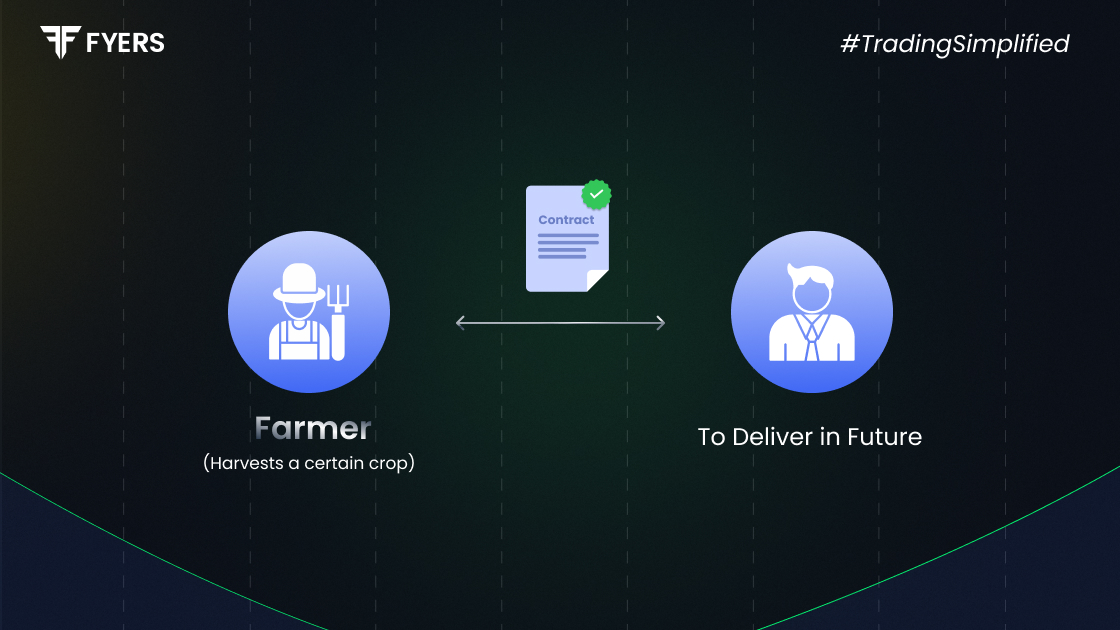

 30 Jul, 2025
30 Jul, 2025
 4 mins read
4 mins read

The forward market plays a crucial role in global trade and finance, offering participants a way to lock in prices for future transactions. Whether you're a business hedging currency exposure or a commodity trader securing supply rates, forward contracts provide certainty in uncertain markets.
In this article, we’ll explain what the forward market is, how it works, its types, benefits, and key differences when compared to the futures market. Let’s begin.
The forward market refers to a segment of the financial market where participants enter into contracts to buy or sell an asset at a predetermined price on a specified future date. These are known as forward contracts.
Unlike standardized futures contracts traded on exchanges, forward contracts are customized agreements traded over the counter (OTC), making them more flexible—but also exposing participants to higher counterparty risk.
The forward market is defined by several key characteristics:
OTC Trading: Contracts are privately negotiated between two parties.
Customisation: Terms of the contract—price, quantity, date—are tailored to the parties’ needs.
No Daily Settlement: Unlike futures, there is no daily marking to market. Settlement happens only at maturity.
Counterparty Risk: There’s a risk of default by one party due to the absence of an exchange or clearing-house.
These features make the forward market suitable for businesses and institutions that need tailored financial agreements.
The types of forward market contracts vary based on the underlying asset being traded. Common types include:
Currency Forwards: Used to hedge against fluctuations in foreign exchange rates.
Commodity Forwards: Agreements to buy or sell commodities like oil, gold, or wheat at a future date.
Interest Rate Forwards: Contracts to lock in interest rates for future borrowing or lending.
Equity Forwards: Used to fix the future purchase or sale price of equities.
Each of these contracts helps participants manage risks in a targeted manner.
Forex forwards are contracts in the forward market where two parties agree to exchange currencies at a set rate on a future date. Businesses use them to hedge foreign currency exposure in international trade.
Non-deliverable forwards are a type of forex forward where physical delivery of currency doesn't happen. Instead, the parties settle the difference between the agreed-upon rate and the market rate in a common currency, usually USD. NDFs are commonly used for currencies that are not freely convertible, such as the Indian Rupee or Chinese Yuan.
These instruments offer flexibility in restricted or regulated markets while still allowing participants to manage currency risk.
Let’s consider a forward market example:
A company in India is expecting a $1 million payment from a US client three months from now. Worried that the USD-INR exchange rate may drop, the company enters a currency forward contract today to sell $1 million at ₹83.50 in three months.
If the spot rate after three months turns out to be ₹82.00, the company benefits by selling at the previously agreed higher rate. This eliminates the risk of currency fluctuation.
The forward market provides several advantages:
Price Certainty: Locking in prices helps in budgeting and forecasting.
Hedging Risk: Protects businesses and investors from adverse price or rate movements.
Customisation: Tailored contracts suit unique business requirements.
Confidentiality: OTC nature ensures contract terms remain private.
These benefits of the forward market make it an essential tool for both traders and corporations managing future exposures in the financial market.
Despite its advantages, the forward market comes with notable limitations:
Counterparty Risk: Since there’s no central clearing-house, default risk is high.
Liquidity Issues: Forward contracts are not easily tradable, making it hard to exit positions.
Lack of Regulation: Being OTC instruments, forwards are less regulated than exchange-traded derivatives.
Opportunity Loss: If the market moves favorably, one might miss better pricing.
These factors must be carefully evaluated before entering into forward contracts.
Understanding the difference between forward market and futures market is vital:
|
Feature |
Forward Market |
Futures Market |
|---|---|---|
|
Trading Venue |
OTC (Private negotiation) |
Exchange-traded |
|
Standardisation |
Customised |
Standardised |
|
Regulation |
Lightly regulated |
Highly regulated |
|
Settlement |
At maturity |
Daily (mark-to-market) |
|
Counterparty Risk |
Higher |
Lower (via clearing-house) |
|
Liquidity |
Lower |
Higher |
In short, forwards offer flexibility but at the cost of increased risk and reduced liquidity.
The forward market serves as a powerful instrument for hedging and planning in financial transactions. It provides certainty in volatile environments by allowing participants to fix future prices today. Whether you're looking at forex forwards, non-deliverable forwards, or commodity forwards, understanding this market can help you make informed financial decisions.
However, one must balance the benefits of the forward market with its risks and consider whether a forward or futures contract is better suited for their needs.
The forward market is where two parties agree to buy or sell an asset at a set price on a future date, usually to hedge against price changes.
A company agrees today to buy oil at ₹6,000 per barrel three months from now, fixing the future price and avoiding market fluctuations.
Forwards are private, custom contracts traded OTC, while futures are standardized and traded on exchanges with daily settlements.
These are forward contracts settled in cash without physical delivery, used mainly for currencies with trading restrictions.
Calculate your Net P&L after deducting all the charges like Tax, Brokerage, etc.
Find your required margin.
Calculate the average price you paid for a stock and determine your total cost.
Estimate your investment growth. Calculate potential returns on one-time investments.
Forecast your investment returns. Understand potential growth with regular contributions.